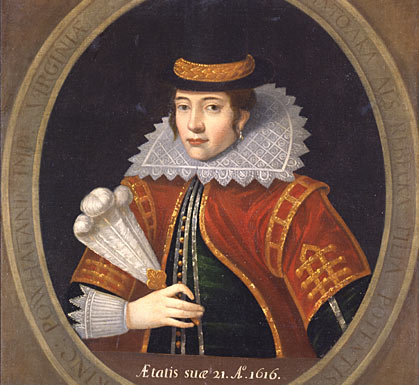Images of a Legend

BOOTON HALL PORTRAIT
likely 1700s, unknown English artist
This widely exhibited oil painting, now part of the National
Portrait Gallery's collection, veers from the 1616 de Passe
engraving in telling ways. Made long after Pocahontas's death, the
painting bears text (out of sight here) that mistakenly calls her
the wife of Thomas, rather than John, Rolfe. Subtler, yet perhaps
more meaningful, distortions exist as well. Her dark skin and black
hair have become white and brown respectively, and her facial
features more delicate. She retains the chaste, high-necked Jacobian
costume of the engraving (which may have covered the real
Pocahontas's tattoos), but her jacket is softer and more feminine.
Altogether, she seems closer to an 18th-century European ideal of
beauty than a 17th-century Powhatan Indian.